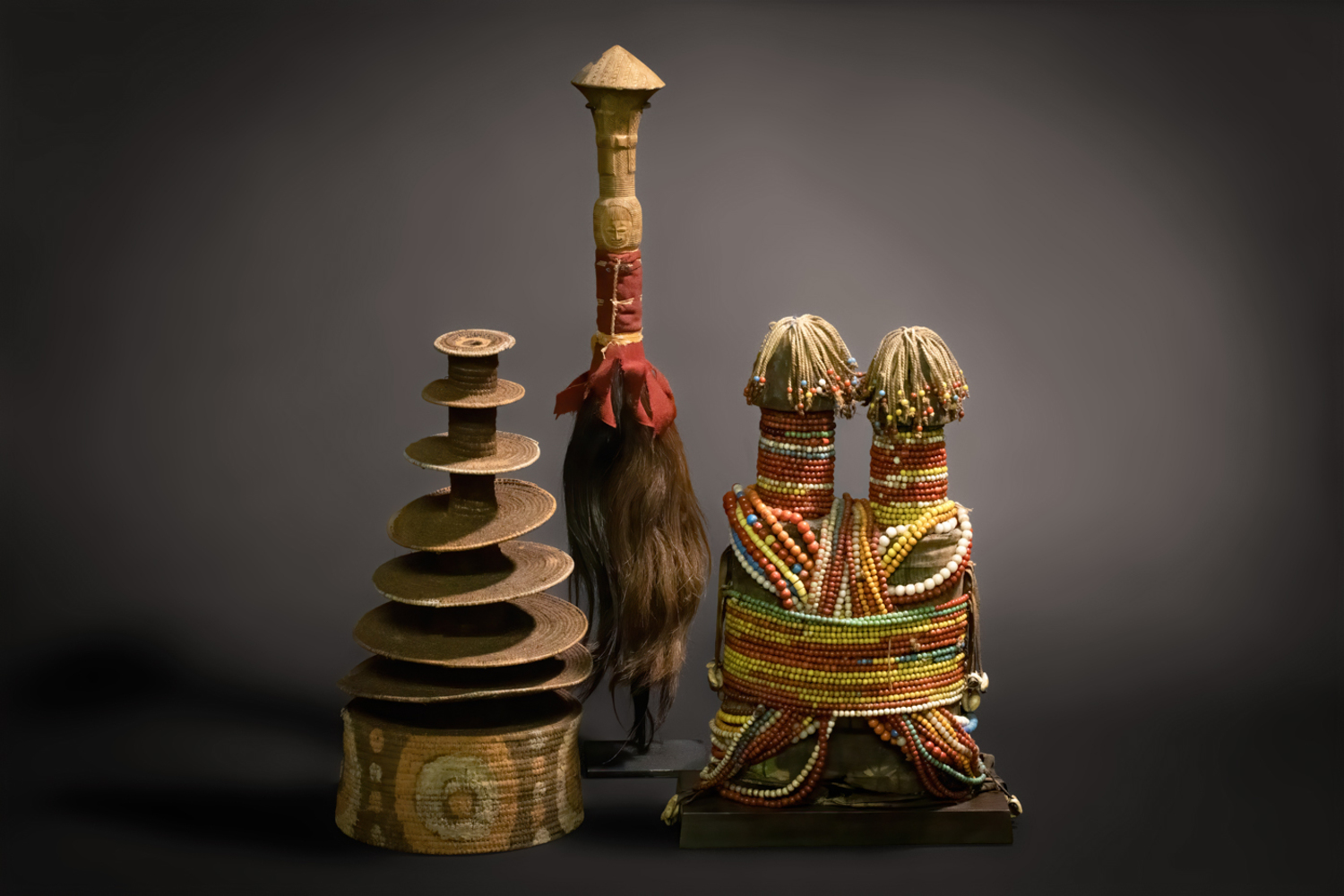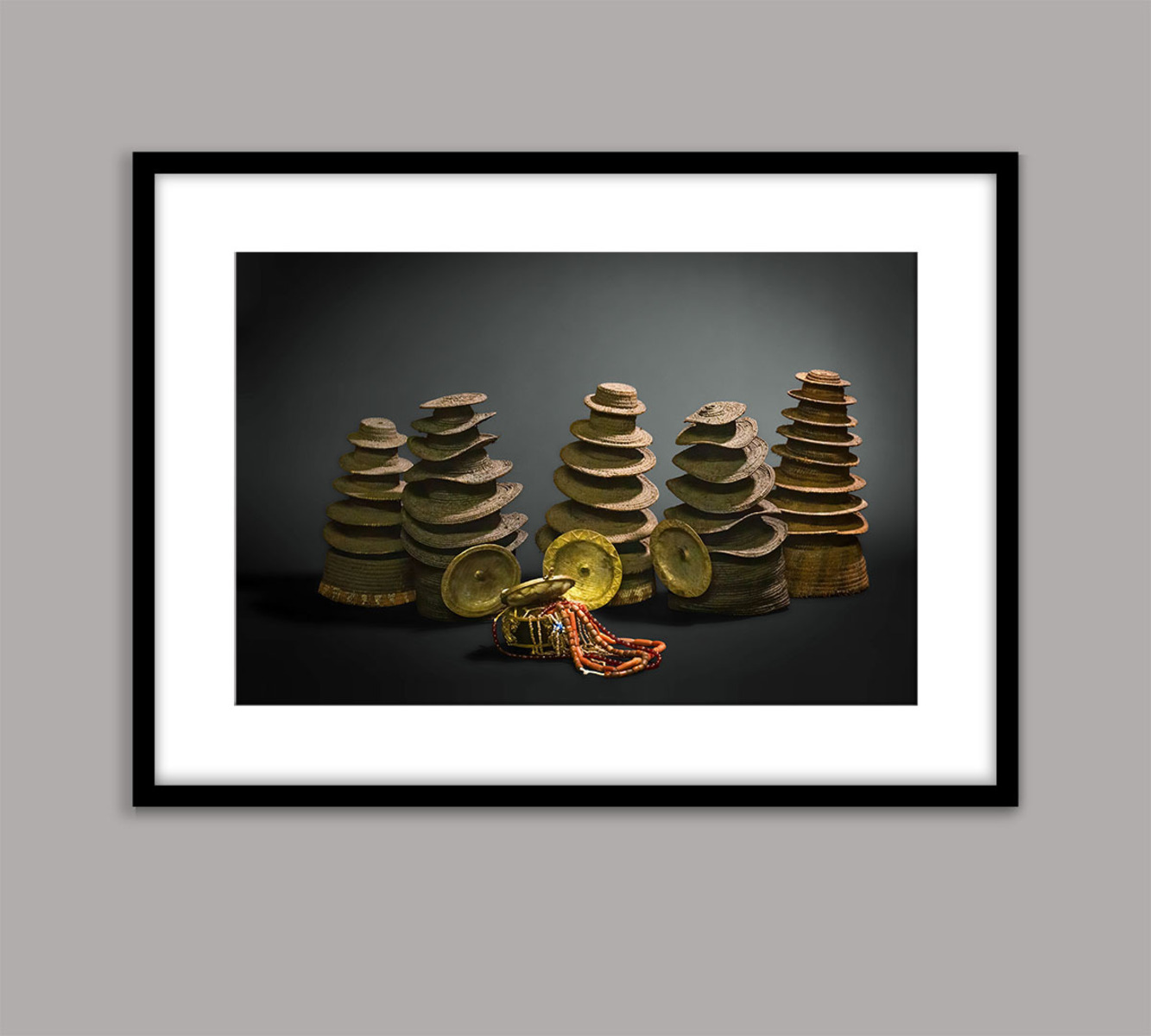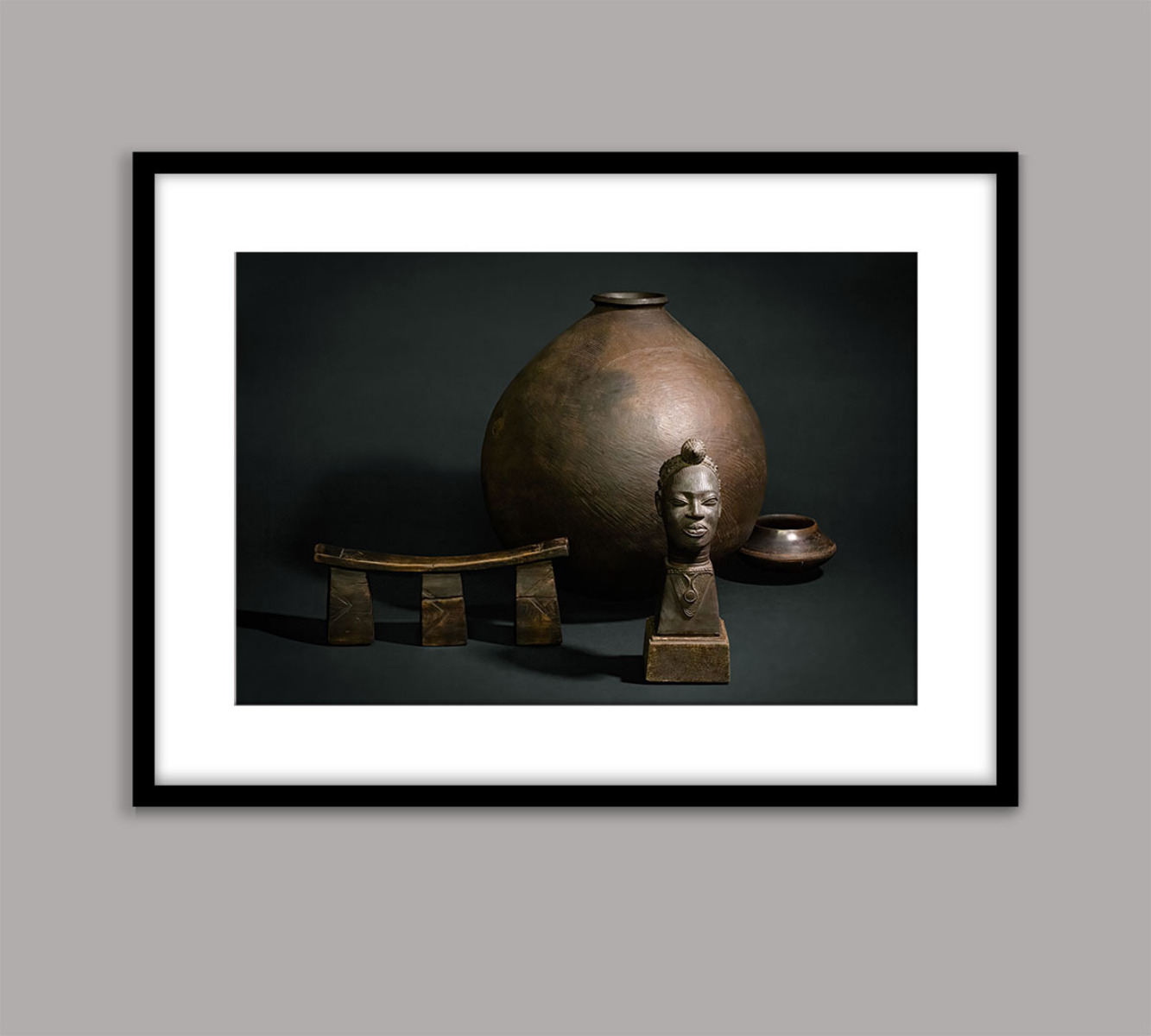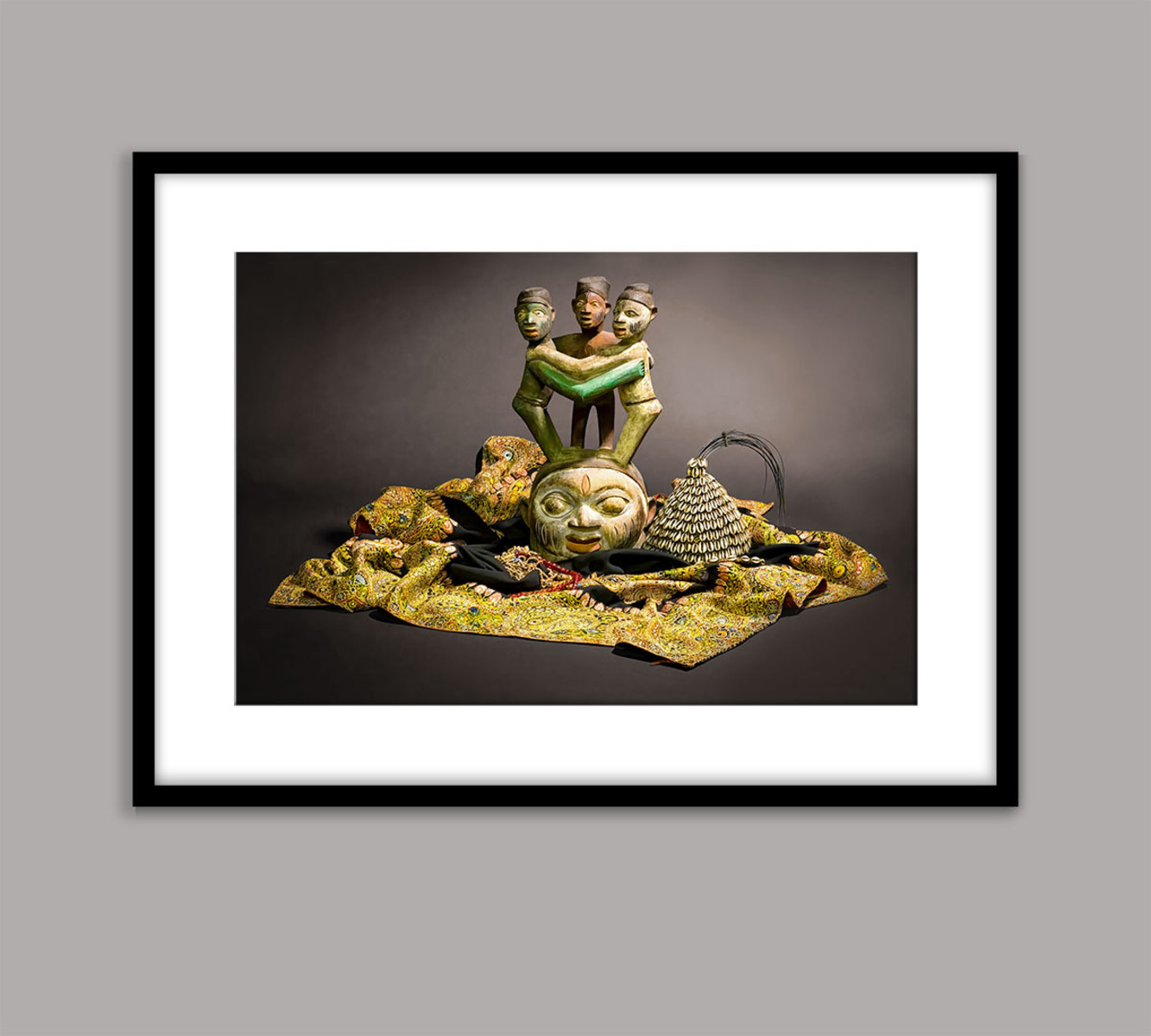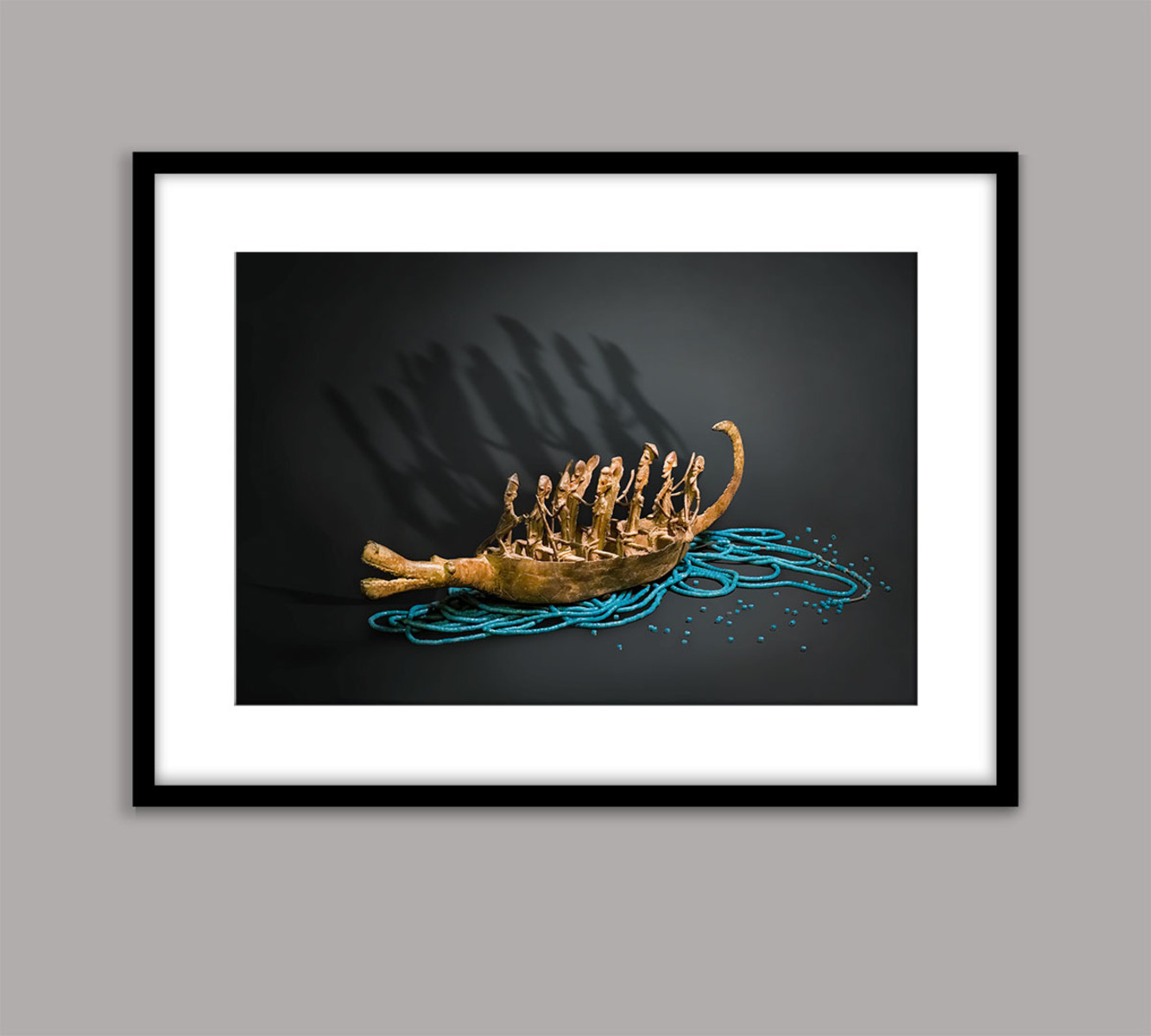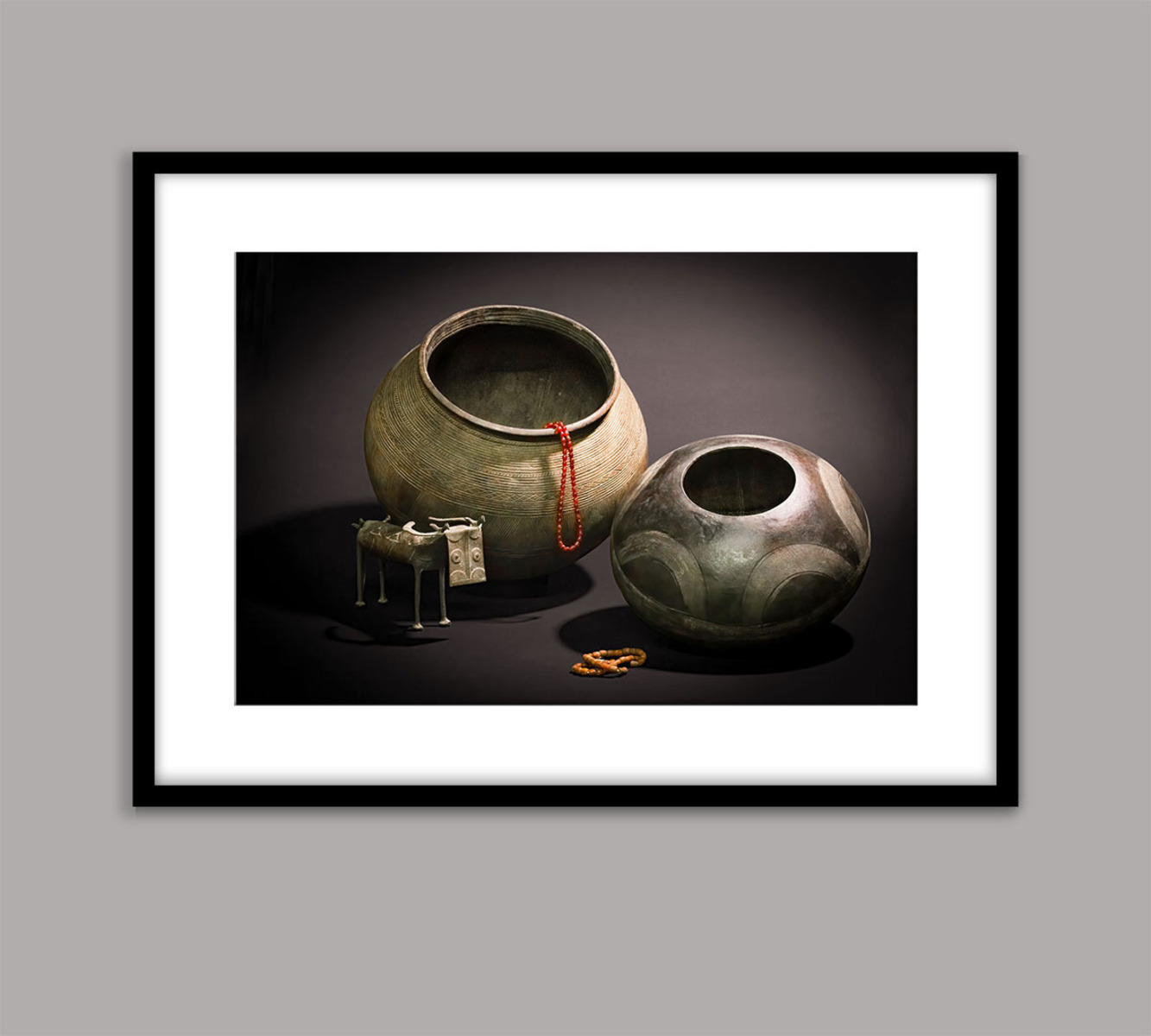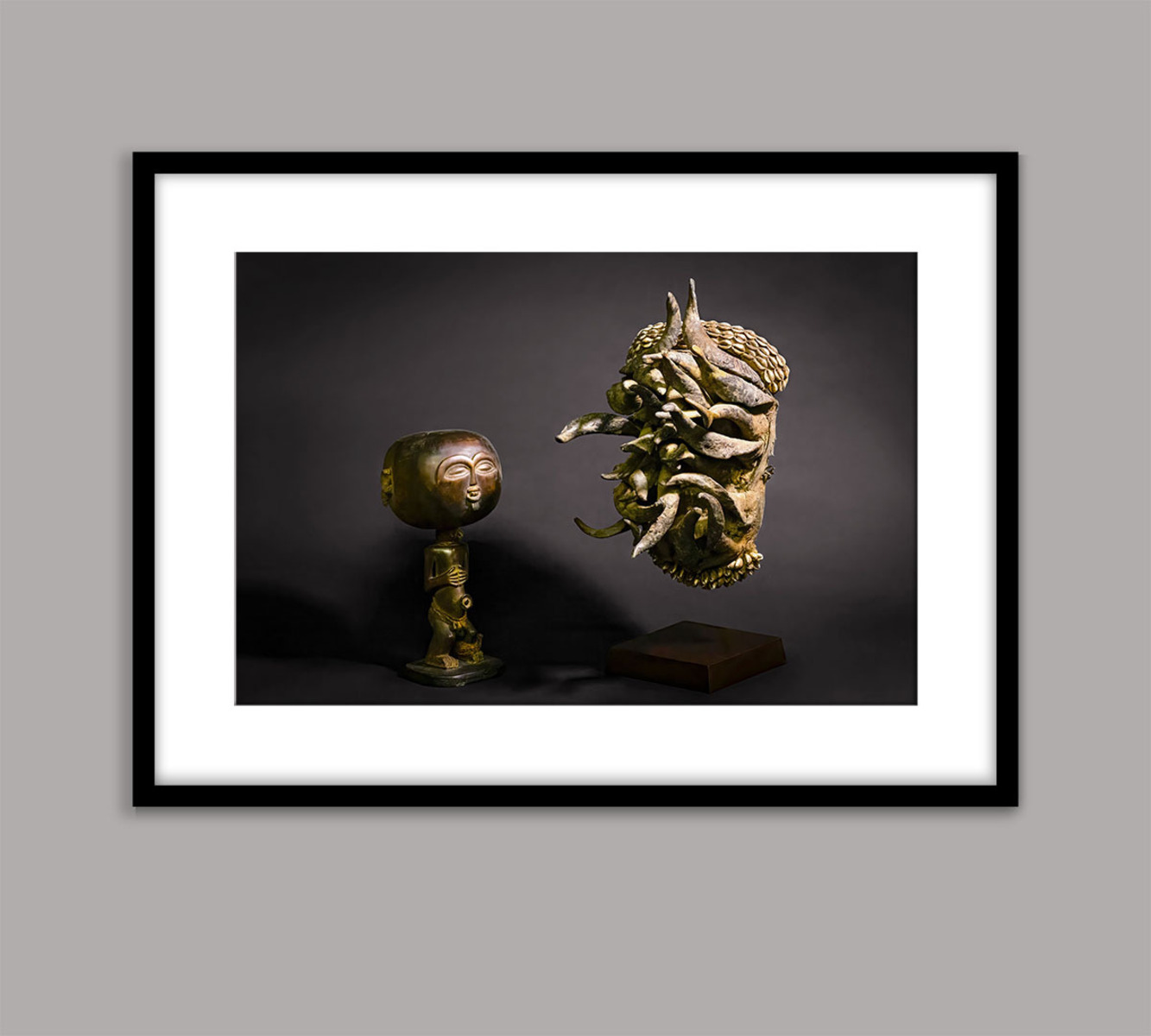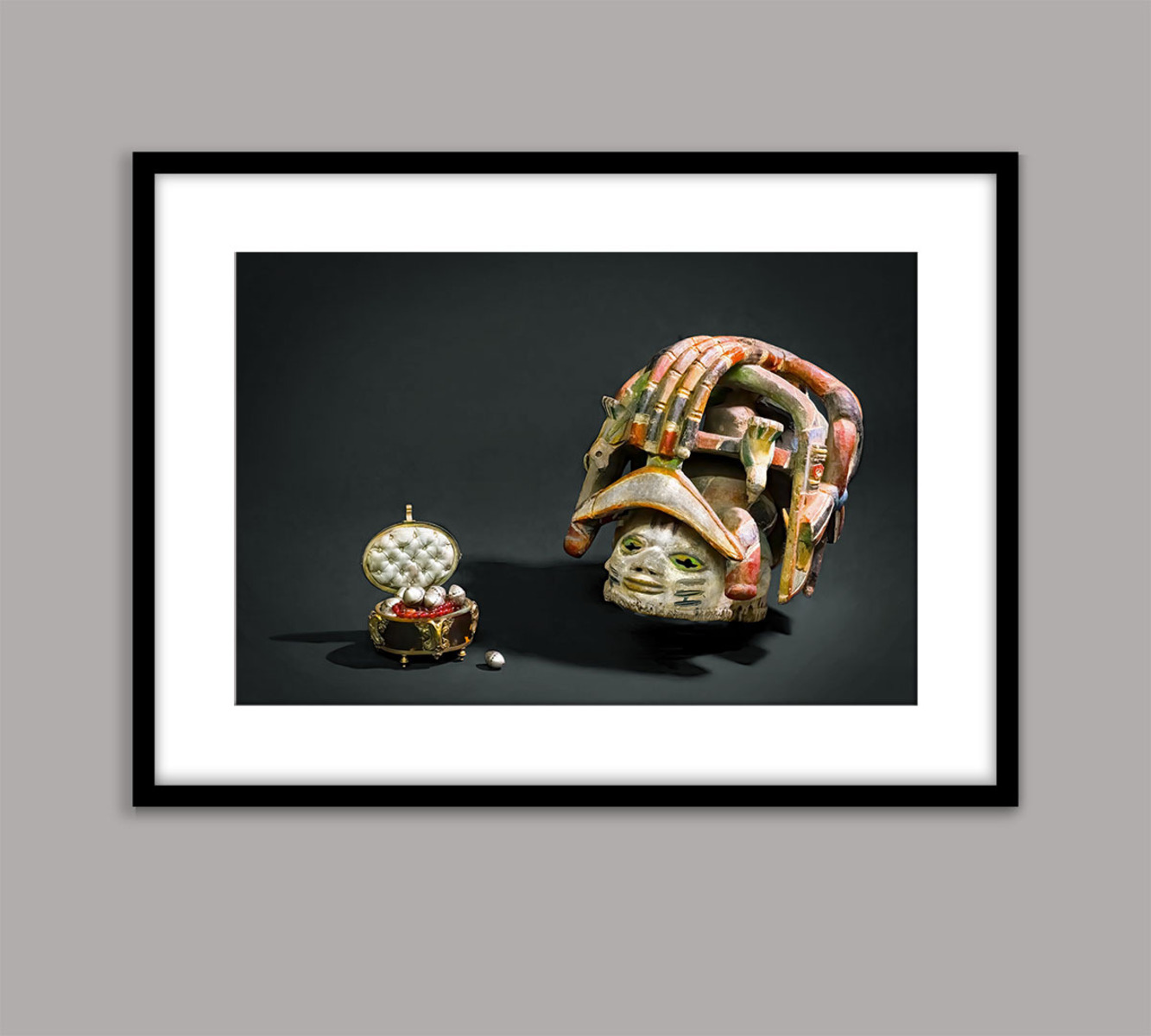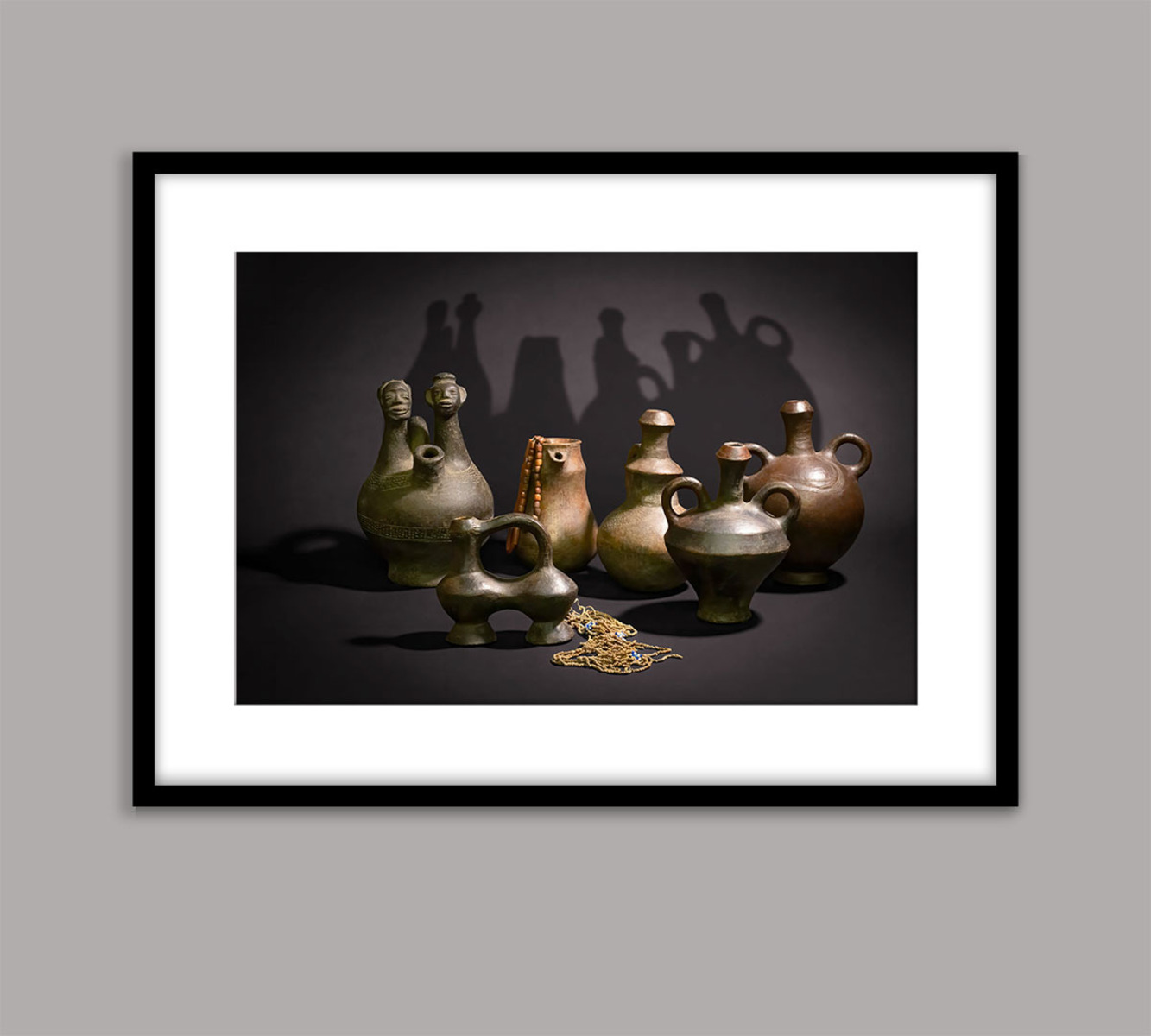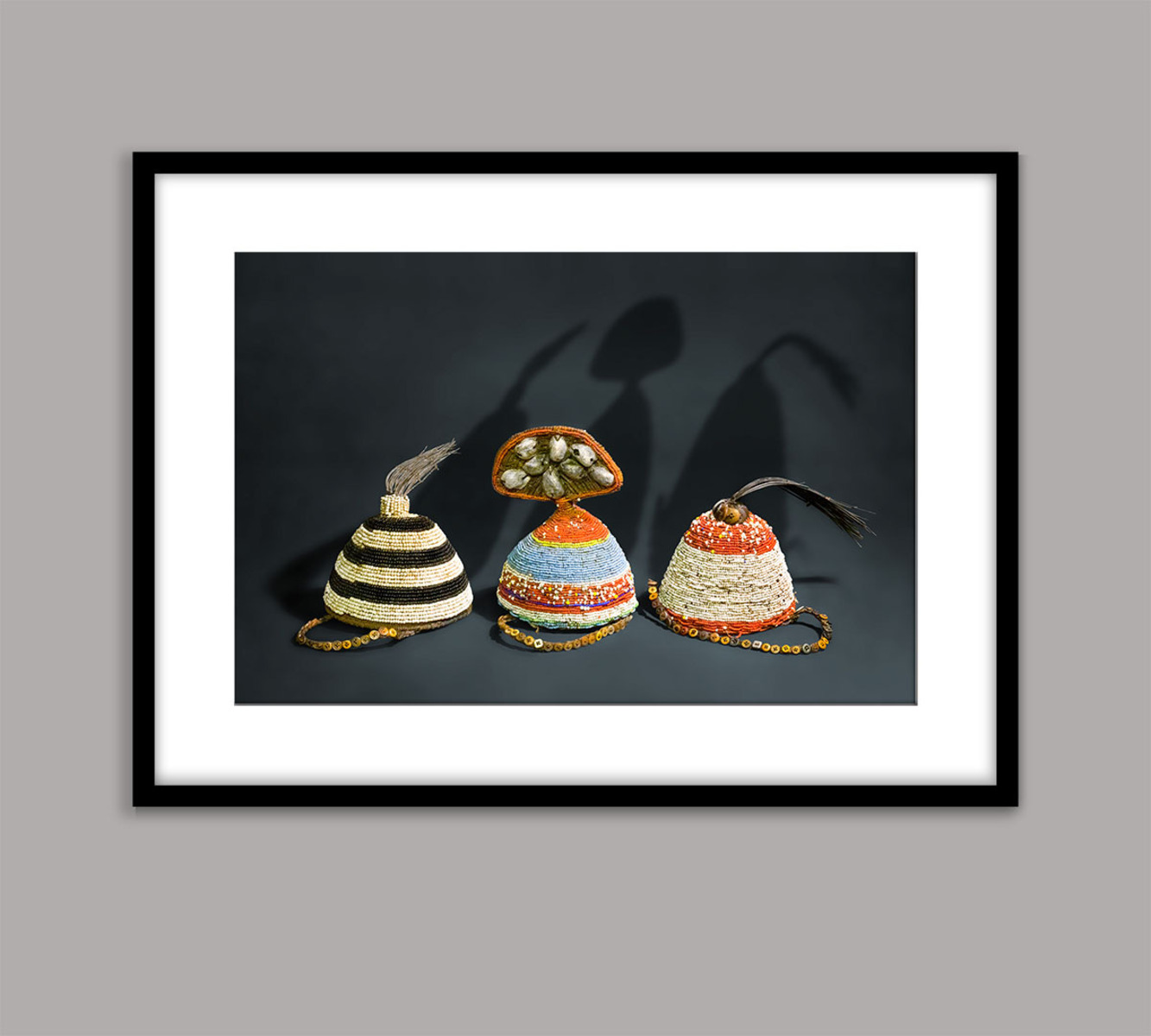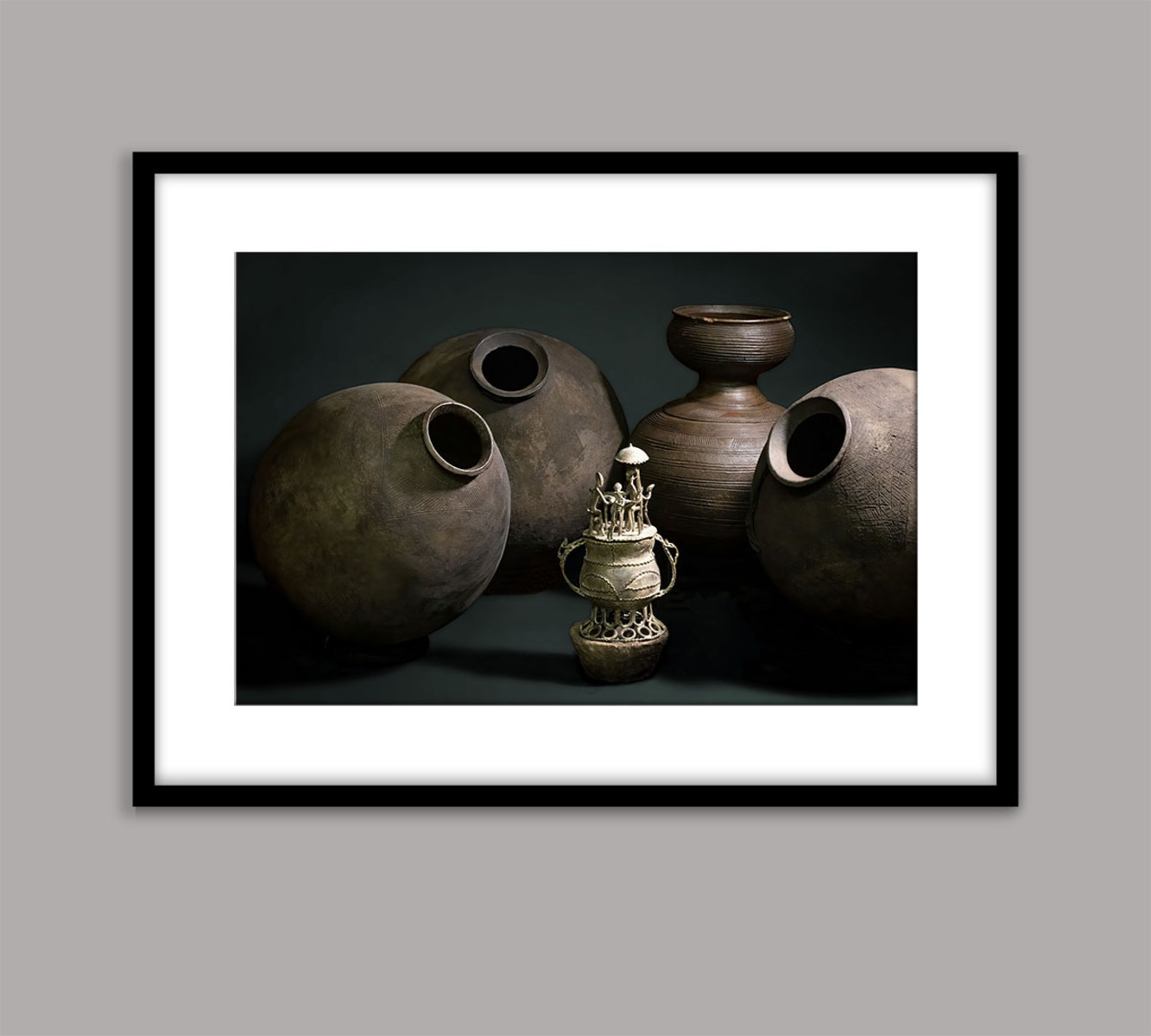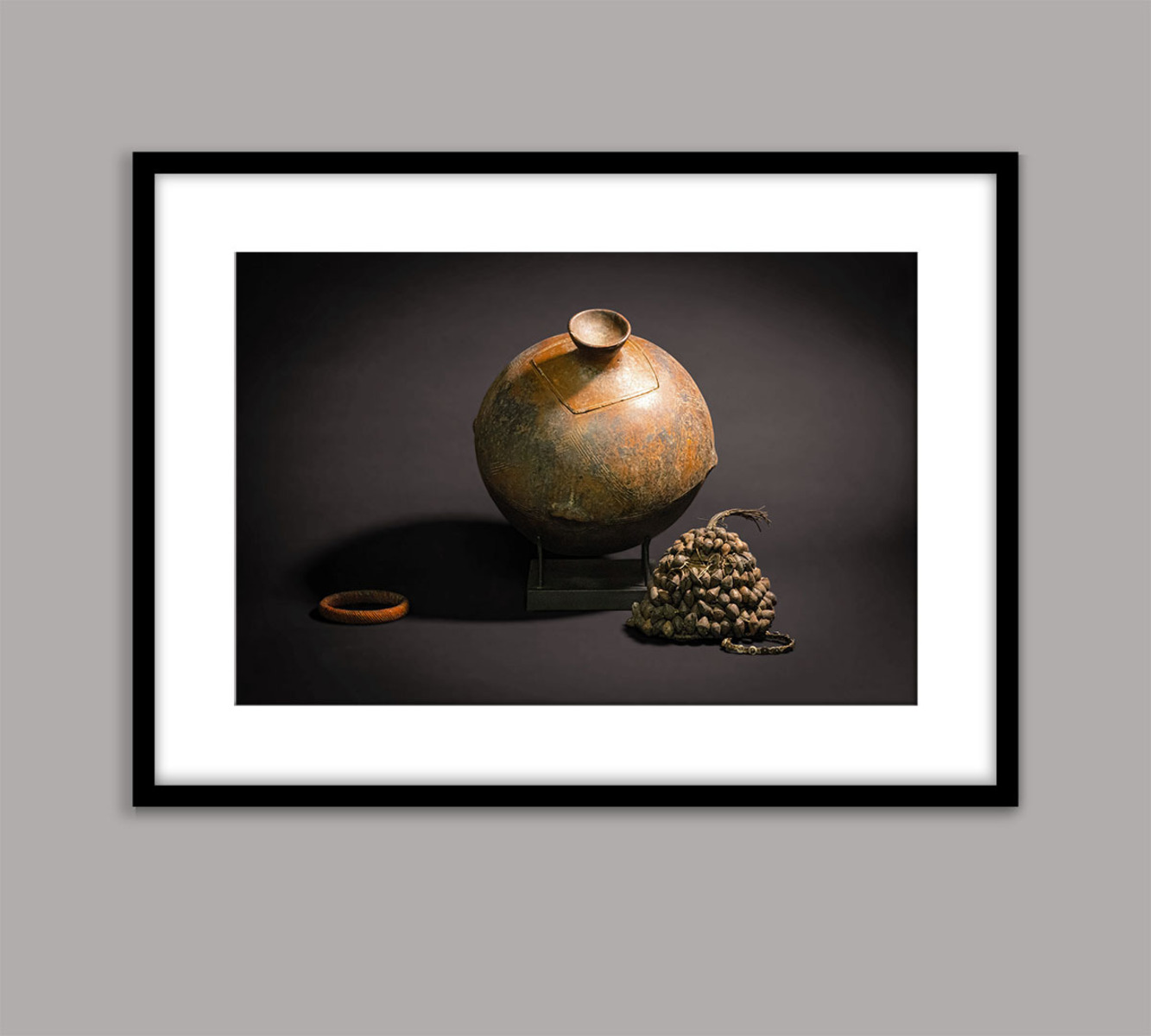Description
Though they originate from vastly different African cultures, these three figures have something important in common: their unique beauty and elaborate construction carry deep social significance and indicate the high social status of the wearer. Pictured here in a group portrait, they symbolize unity and cooperation, their cultural differences accepted and celebrated, standing together as individuals and equals.
From left is the Botolo Hat, made by the Ekonda People of the Congolese rainforest. The Botolo is a crucial component of the Ekonda chief’s wardrobe. It features multiple circular brims molded in a pagoda shaped tower. In the middle stands a fly whisk crafted by the Baule People of Côte d’Ivoire. Atop the whisk handle is a precisely carved, cone shaped figure, embellished with geometric patterns and a human face. To the right of the whisk is a fertility doll from the Fali People of Nigeria. By cultural tradition, as a young Fali man prepares for marriage, he commissions a doll for his fiancé, who reciprocally carries it on her back. The doll symbolizes parental commitment and the healthy birth of their future child–or twins, as in this image.
REFERENCES: 1- Biebuyck, Daniel P. and Nelly Van Den Abbeele. 1984. The Power Of Headdresses, Brussels: Tendi. 2- Perani, Judith. 1997. “Crowning Achievements: African Arts of Dressing the Head.” Journal of African Arts. Vol. 30, No. 2. 3- The Museum of African Art: The Veda and Dr. Zdravko Pecar Collection. 2021. “Fertility Doll.” http://mau.rs/en/fertility-doll.html


